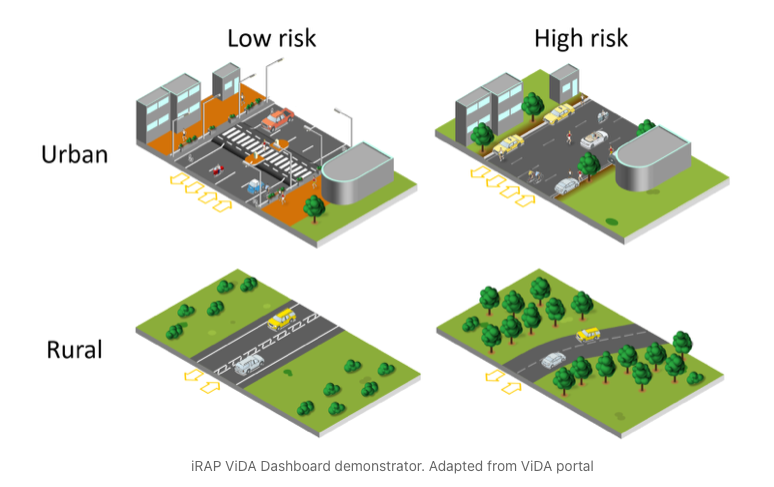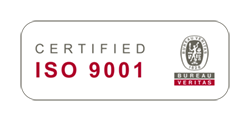- Solutions
- Innovation
- Software
Get Aimsun Next
Use Aimsun Next
About Aimsun Next
- About
Road safety for all: how transport simulation can help predict and prevent blackspots
Published on April 20, 2021

Marcel Sala
Scientific Researcher
Road safety is a major concern for public administrations worldwide: severe injuries and fatalities are not only a human tragedy but also have huge social costs. These costs are quantified by government institutions as the value of life. While this economic conversion is the topic of an ethical and statistical controversy well beyond the scope of this text, for developed countries, the value of life is in the range of millions of Euros; to take a few examples, 1.3 million Euros in Spain, 2.04 million Euros in the UK, 2.4 million Euros in Sweden, and 11.15 million Euros for the USA. The high monetary value of life makes reducing severe injuries and fatalities an economic priority for transportation administrations.
So far, a great deal of effort has been made to reduce the risk of road vehicle crashes, and to minimise injury by improving vehicular safety, seatbelts, airbags, anti-lock braking systems (ABS), and electronic stability programmes (ESP). Many road managers also address blackspots, i.e., the points where a high concentration of crashes occur. This latter approach has proven highly effective, as humans have limited capabilities for reacting to unexpected circumstances. Many good practices on road building and traffic management have been deployed over time such as:
- Avoiding having a sharp bend in isolation; if a sharp bend is preceded by gradually sharper bends, they act as a warning for the driver.
- Improving pedestrian crossing visibility and reducing speed limits so drivers have more time to react.
- Providing adequate cycling infrastructure to reduce conflict points between cyclists and motor vehicles or pedestrians.
- Reduction of speed limits on cities, like the widespread reduction from 50 km/h to 30 km/h.
- Enhancement of traffic rules enforcement, with more traffic controls in general like speed traps and harsher consequences when violating the law
But the world mobility has also evolved, and nowadays we have newer modes of transportation that while benefit from the previous, they are not fully covered by those actions and line of thought. This is known as micromobility, as the scale of the vehicles is small, typically composed by bicycles, e-scooters, hoverboards, segways, skateboards, etc. The small scale of the vehicles prevents them of offering the typical level of protection of cars, while still allowing the users to travel at moderate speeds within the urban streets. These users together with pedestrians are named as Vulnerable Road Users (VRU).
The PHOEBE project has the ambitious goal of developing and piloting a framework to make safety analysis easier, faster, and available to more people, by developing a predefined set of solutions. The scope will be broader than the typical car-centric approach, and will apply to all roads and street users, putting emphasis on the often-forgotten VRUs.
This methodology will be envisioned and designed to improve safety for all road users in Europe. This will be achieved by testing different strategies in three locations: the West Midlands in the UK, Athens in Greece and Valencia in Spain, where a variety of scenarios will be tested both in simulation and in real life.
To reach those ambitious goals, the PHOEBE project will tackle the integration of the internationally recognized iRAP safety score into Aimsun traffic simulation software. The iRAP Star Rating score is a road safety rating system to assess the risk level of a road discretized in 5 different values. 1 star for the highest road risk up to 5 stars for the lowest risk level. The risk is analysed for four different modes of transportation: car occupants, motorcyclists, pedestrians and bicyclists. So, each road segment can have 4 different star ratings. The safety score assesses the elements present or missing on the road, like hard shoulder width, separation between traffic directions, sidewalk, pedestrian crossings, bike lanes, etc. You can see some examples in the illustrations below for urban and rural infrastructure.

The star rating system presented so far is static, in the sense that it considers average traffic conditions. Thus, to add value to the integration, a new methodology will be developed to update the iRAP safety score based on dynamic traffic parameters like flows, speed and densities. Achieving variation in safety ratings according to the prevailing traffic conditions in reality or in Aimsun simulation, will provide invaluable information to practitioners and traffic administration when forecasting future road safety, helping them to address high risk scenarios before they materialize on the streets.
Additionally, the PHOEBE project aims to develop realistic behavioural models for collisions. Note that simulation tools have historically used behavioural models that are intrinsically safe. There were multiple reasons for that decision: they are good enough to reproduce the vehicular dynamics of traffic flow, they need less data to be calibrated and require less computational power. These models made sense in the early days of microscopic simulation, and still make sense nowadays for large-scale mobility models. However, now for small-scale scenarios, we have the option to have more detailed human behaviour models that can model errors in perception, judgment or taking actions that might result in potentially unsafe situations. Some of these state-of-the-art behavioural models will be integrated by the Technical University of Delft into Aimsun simulations, to allow richer analysis.
While the PHOEBE project team have many challenges ahead, we have already done a thorough state-of-the-art review on the available tools for simulation, risk assessment, behavioural models, mode shift dynamics covering all the PHOEBE topics. From this knowledge, we are setting the first steps on tool integration. We’ll update you when we have results to share – watch this space!

